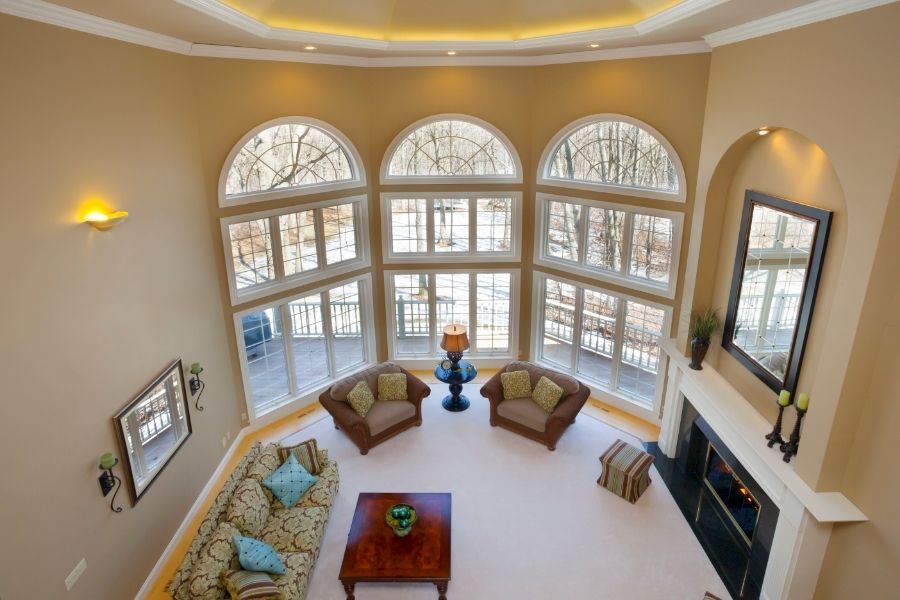 If you’re wondering Can Crown Molding be Installed on a Vaulted Ceiling, you’ve come to the right place. After all, crown molding is one of the most cost-effective ways to upgrade the interior décor of an old house or add a touch of elegance to a new one. This is irrespective of whether you have a vaulted ceiling or not.
If you’re wondering Can Crown Molding be Installed on a Vaulted Ceiling, you’ve come to the right place. After all, crown molding is one of the most cost-effective ways to upgrade the interior décor of an old house or add a touch of elegance to a new one. This is irrespective of whether you have a vaulted ceiling or not.
When installed correctly, crown molding transforms a plain-looking interior to an inviting and cozy masterpiece. Even better, it can add value to your house and attract more prospective buyers.
So when it comes to high angled and vaulted ceilings many people assume it’s impossible to add crown molding. This is definitely not the case. So although it can be challenging, it’s certainly possible.
Related: What is the Best Cordless Nailer (including crown molding?)
Can Crown Molding be Installed on a Vaulted Ceiling?
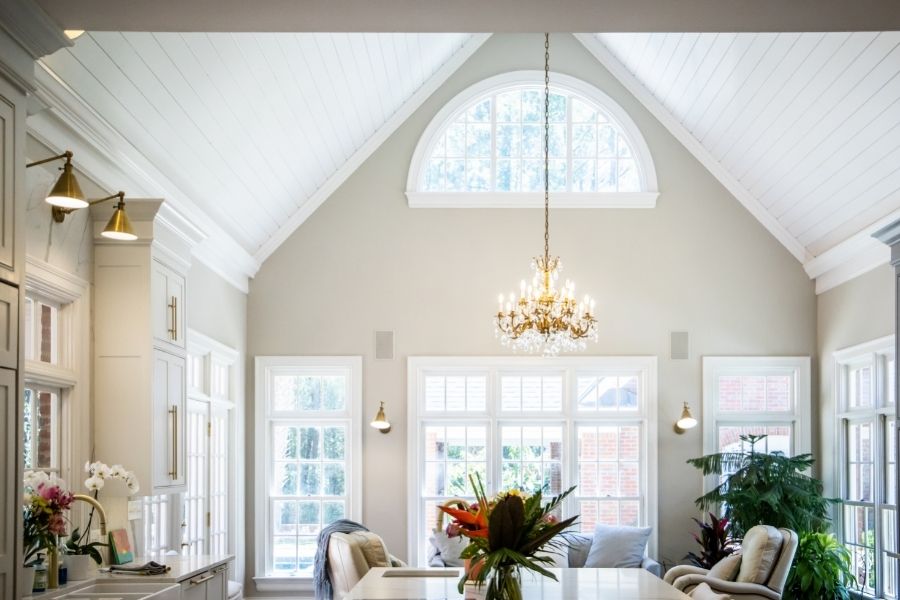
Yes, crown molding can be installed on vaulted ceilings. It’s not only possible, but can also become an elegant highlight that draws your visitors’ attention upward. Admittedly, vaulted ceilings contain odd angles and inclines that can make it challenging and costly to install crown molding. Nevertheless, a skilful and experienced craftsman can add a touch of style to complement the design of your vaulted ceiling.
Many contractors and home remodeling experts avoid installing crown molding on vaulted ceilings like the plague. Such projects take a lot of skill, time, and experience. You also have to consider how much the crown molding will cost to purchase and put up.
Vaulted ceilings are built with intricate turns and some are quite high and slant while others are curved. The crown molding must be measured and cut precisely so that the top and bottom edges fit tightly against the ceiling and walls respectively. Ensure you go for a crown molding profile that matches the style of your house for a cohesive finish.
Crown molding can replace the stark plain appearance of some vaulted ceilings with a warm and cozy finished look that’s more welcoming. High and angled ceilings look and feel more upscale with crown that’s coped perfectly at every joint. And whatever style suits your tastes, there’s a wide choice of designs from traditional to ultra modern styles and anything in between.
Does Crown Molding Look Good on Vaulted Ceilings?
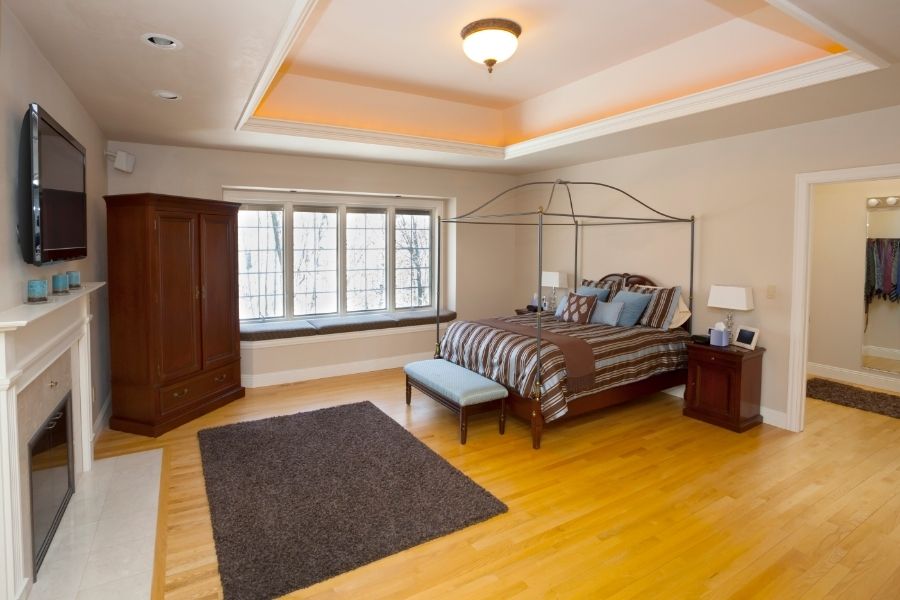
Homeowners and remodeling specialists are divided on whether vaulted ceilings look better with crown molding or not. However, we can all agree that crown molding adds a touch of stylish finish to any ceiling when installed correctly. If you’re after a more traditional look, crown molding can help you to dress up your vault ceilinged room and break the wall-ceiling space.
On the other hand, vaulted ceilings have personal architectural highlights that include odd angles, slanting surfaces, and curved parts. Adding crown molding can break the initial design style and lose its elegance. Some people find that installing crown molding on cathedral ceilings only draws attention to the asymmetry. Others consider it overkill and prefer dressing up other wall trims such as furniture railings, casings, and baseboards instead.
Related: Best Rope Lights For Crown Molding
Ultimately, it all comes down to your personal taste, type and style of your vaulted ceiling, the prowess of your contractor, and your budget. Some people find vaulted ceilings dramatically beautiful without crown molding while others consider them plain cold, tasteless, and drafty.
If you choose to install crown molding on your vaulted ceiling, remember to consider that:
- Rooms with high vaulted ceilings look fancier with heavier and wider crown molding
- An ornately designed vaulted ceiling requires elaborate crown molding to match and complement its style.
Related: When to Cope Crown Molding (instead of mitering)
Can You Put Crown Molding on a Slanted Ceiling?
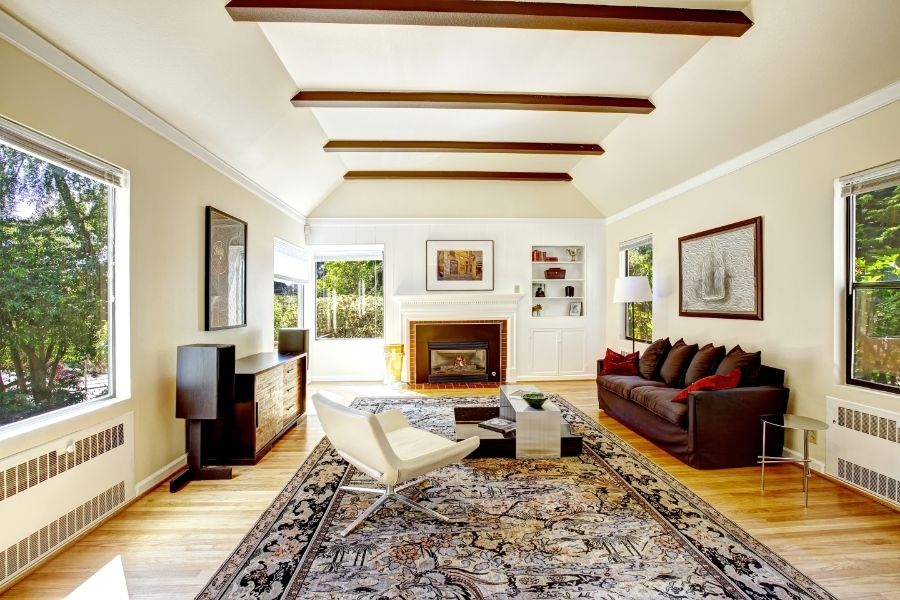
Yes, it’s possible to put up crown molding on an angled ceiling, but it’s one of the most challenging house remodeling projects. It’s easier to run crown molding around a flat ceiling or one that slants at a small angle than on a vaulted ceiling with a high pitch.
There are multiple ways to install crown molding on a slanted ceiling depending on the degree of the slope. Here are the 5 most popular approaches:
Method 1: Ignore the slope
This is one of the easiest and cost-friendly ways to install crown molding on an angled ceiling. Simply install the crown molding at the same height as the flat walls and then run it straight onto the slanted ceiling and angled walls. Afterward, you can paint the angled part of the walls the same color as the ceiling for a consistent finish.
This method allows you to avoid the challenging odd angles and curves but can also diminish the original style of your house.
Method 2: Coping the crown molding
In this method, you first put up a leading piece of crown molding dead into the flat wall. Then, twist the slanting piece such that its bottom meets the base of the straight (leading) crown molding piece. Cope off the tip of the slanted piece so it fits with the leading piece and then caulk and paint over the joint for a smooth and consistent finish.
Method 3: Using pliable foam crown molding
Flex foam crown molding is pliable, so you can easily put it around the corners, edges, and curves of your slanted ceiling-wall trim. Foam ceiling molding is also lightweight and you can install it on the high slanted vaulted ceiling without huffing and puffing. This also makes it secure from falling off as with heavier crown molding materials.
Method 4: Integrating a triangular piece of crown molding as a transition
A triangular transition piece of crown molding can make installation of crown molding on slanted ceilings a walk in the park. Just cut the piece such that it installs flush on the flat wall on one side. The other edge guides the crown molding as it installs around the slanted ceiling and transitions it back onto the flat ceiling-wall border.
Method 5: Adding a flat stock piece to the slope
This approach can be considerably harder than the other methods. It involves making a flat piece of regular lumber to replicate a flat ceiling. The stock piece then installs and extends above the crown molding. It can also transition the molding vertically to intersect with the slanted ceiling.
Even better, this flat lumber tray forms a stable surface to nail the crown molding in place.
How High Should Ceilings Be for Crown Molding?
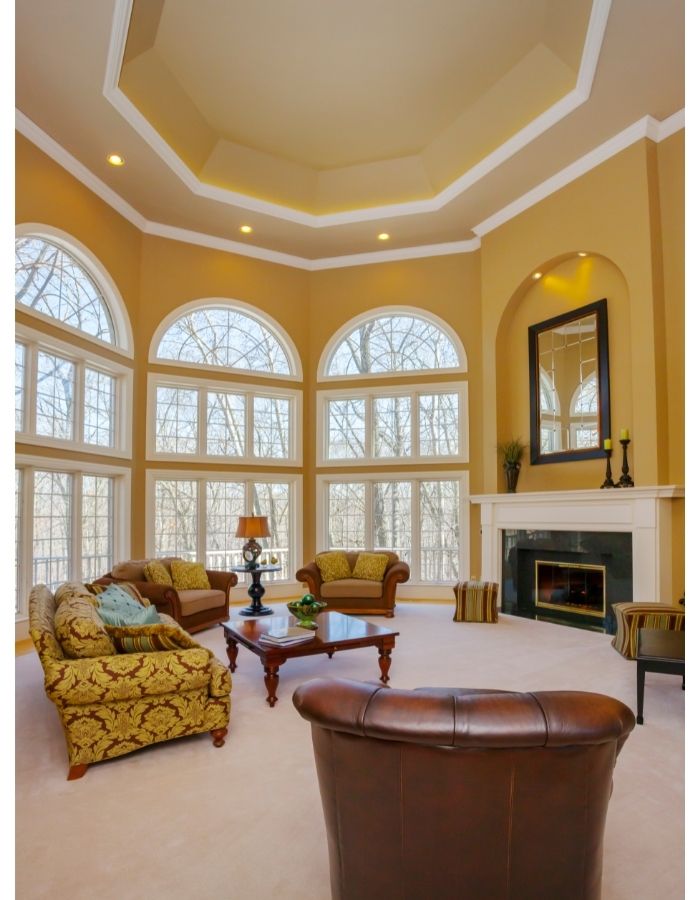
There’s no set ceiling height for crown molding. There are suitable crown molding styles, profiles, and sizes for each ceiling. However, the crown molding finish you choose can make your house interior look and feel cozy, cramped, or empty and dominating.
Installing crown molding in a low ceiling can lower the ceiling further if you paint the molding and ceiling the same color. On the other hand, a traditional house designed with a high ceiling (8 feet and above) looks and feels cold, imposing, and empty without crown molding.
Related: Cutting Crown Molding Flat and How to Install It
How Can I Make My Vaulted Ceilings Look Better?
Vaulted ceilings add height and elegance to a limited vertical indoor space. The extra space allows for extensive personal tweaks to make an already beautiful design even fancier. In fact, a house with a vaulted ceiling can look odd and empty and feel cold. Incorporating suitable crown molding blends the upper and lower space and draws the eyes upward.
You can create the illusion of infinite wall and floor space in a house with a vaulted ceiling and make the interior more elegant using these creative ideas:
-
Using a skylight
Skylights are common integrations in most vaulted ceilings. They allow natural light to seep into and flood the house interior. In turn, the light highlights the beauty of the vaulted ceiling and house furnishings and can brighten and warm up the interior in style.
An architectural domed skylight along with high arched accent windows makes for an even more elegant finish. Even better, this brings in more light than ground-level windows without limiting your privacy.
-
Integrate a hanging statement light fixture
Hanging a large and conspicuous statement fixture such as a crystal chandelier at a prominent spot connects the upper and lower spaces in a room with vaulted ceilings. The fixture also adds a touch of elegance when installed appropriately.
-
Hang your decorative artwork high up the walls
Make the huge space less imposing, fancier, and cozier by mounting decorative art pieces such as wall paintings and photographs high up the walls. A decorated wall looks graceful and draws attention upwards.
The decorative items can cover the entire upper wall in a gallery fashion or they can be individual large art pieces that you hang at intervals. Either way, ensure your wall artwork complements the rest of the interior furnishings for a cohesive finish.
-
Hang window treatments from the vaulted ceiling
Hanging all your window treatments such as draperies and curtains at the ceiling height gives the illusion of a consistent and dramatic ceiling-to-wall space. Installing them lower would create a break in the wall and make the upper space look isolated and cold.
-
Use natural wood paneling for crown molding and ceiling
A ceiling and crown molding designed using natural-toned wood panels gives the house an authentic natural look and feel. The extra space makes the room less claustrophobic and gives the house a soothing and stylish finish.
-
Use creative shelf designs
Wall shelves are effective at covering up empty spaces in style. The added space in houses with vaulted ceilings presents more choice to play around with. You can try tall bookcases and floating shelves for a more magnificent finish.
Final thoughts
If you thought it’s impossible to put up crown molding in a house built with a cathedral ceiling, think again. Installing crown molding on a vaulted ceiling is akin to putting a fancy frame over an already striking picture. The picture looks nice but unfinished without the frame. In a similar way, crown molding can highlight the design and elegance of your vaulted ceiling and add value to the entire house.
